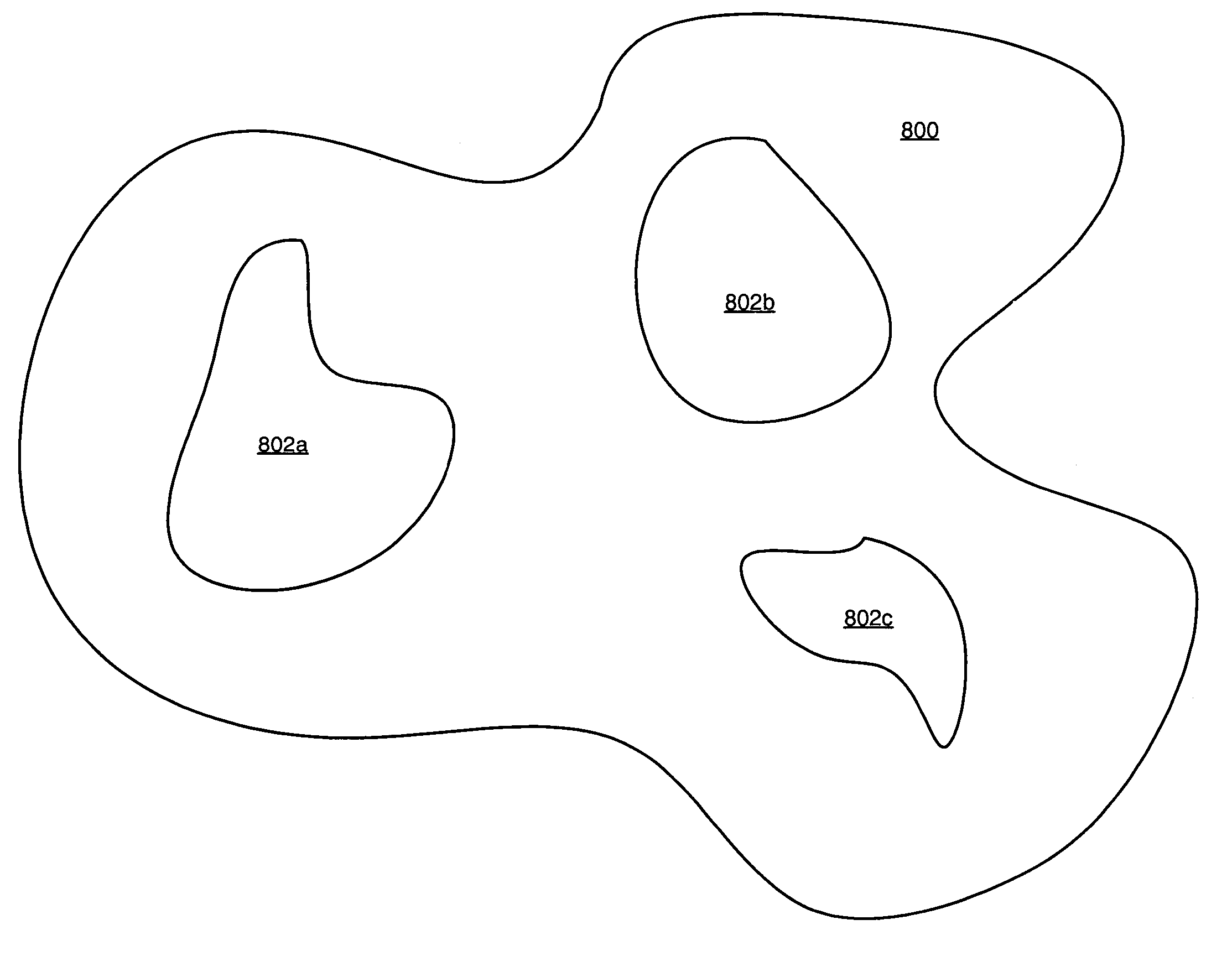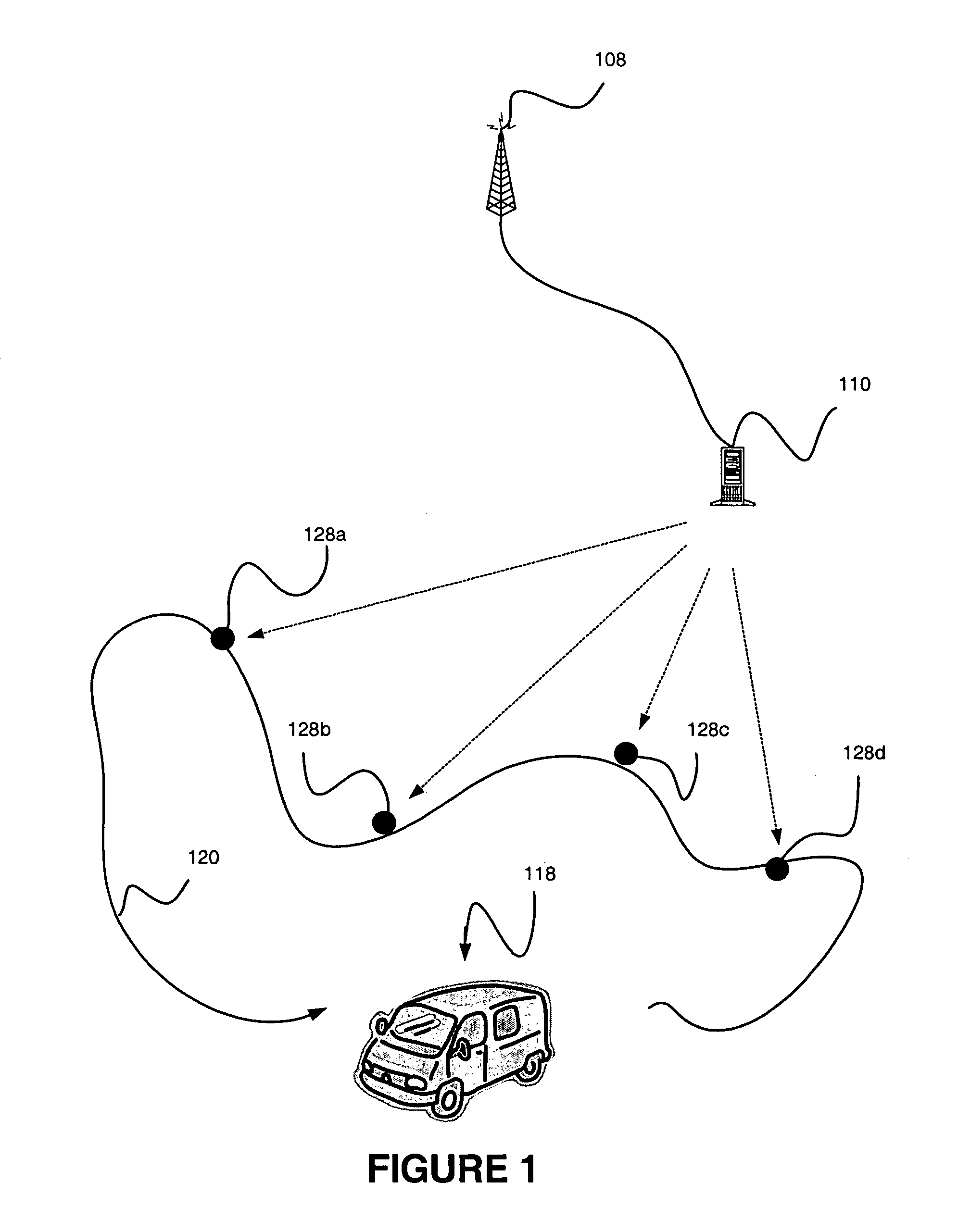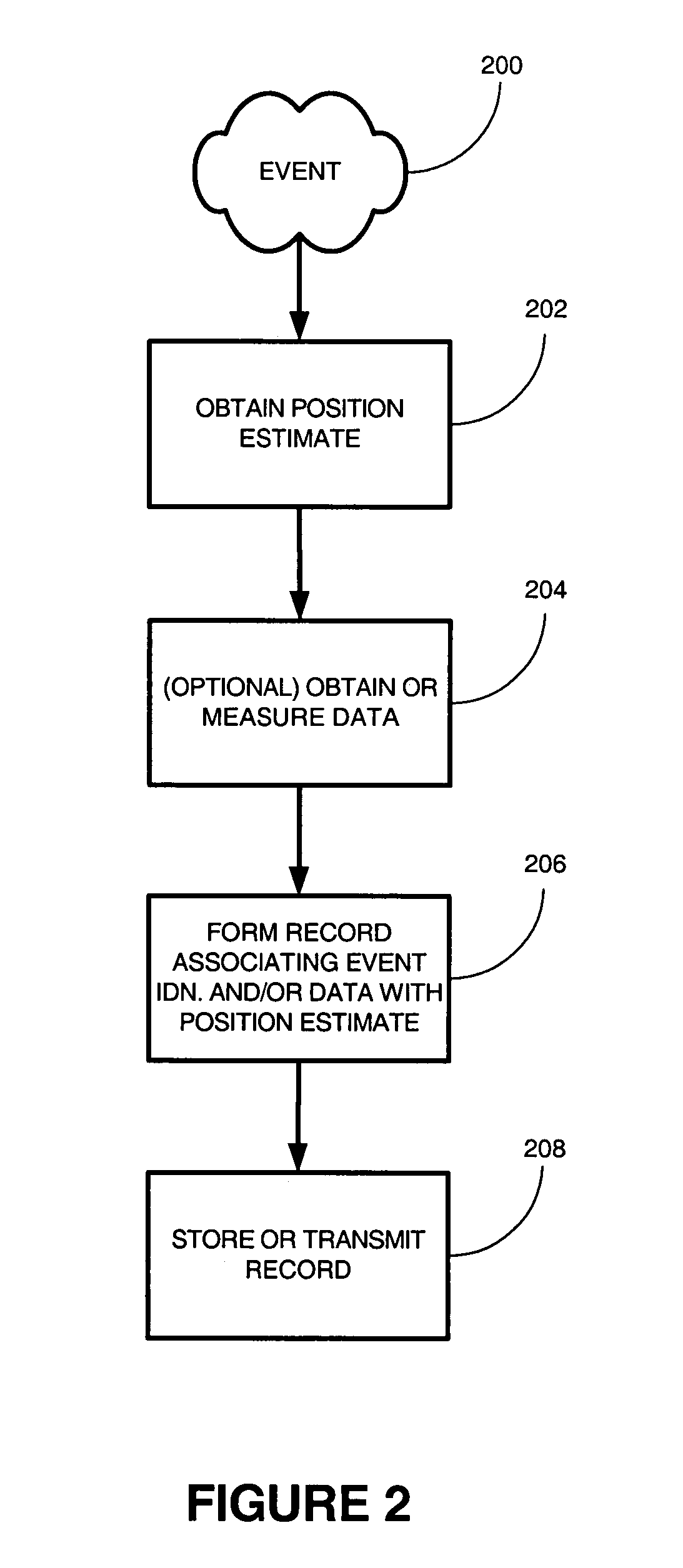Event-triggered data collection
a data collection and event technology, applied in the field of wireless communication, can solve the problems of ad hoc, difficult data collection, and labor-intensive current approaches to collect data useful for network applications
- Summary
- Abstract
- Description
- Claims
- Application Information
AI Technical Summary
Benefits of technology
Problems solved by technology
Method used
Image
Examples
third embodiment
[0043]In a third embodiment, the event is simply the expiration of a timer, or other timing element such as a counter counting up to or down to a target or level, or similar occurrence.
[0044]In one embodiment, the position of the subscriber station is determined through a position determination system overlaid onto the wireless communications system in which the subscriber station is operating. FIG. 4 illustrates an example of such a system. As illustrated, subscriber station 412 receives signals transmitted by a plurality of reference sources 402, 404, 406, and 408 visible to a receiver in the subscriber station. As illustrated, the reference sources may be base stations (BTSs), GPS satellites, or combinations of BTSs and GPS satellites.
[0045]Each of the reference sources transmits a signal which is modulated with an identification code which uniquely identifies the reference source. In one implementation, the identification codes are PN codes, which may differ in length or periodi...
second embodiment
[0057]In the two-phase method, in the first data collections phase, failed handoff areas are identified as described in the previous embodiment. In the second network applications phase, however, when it is detected that a subscriber station is roaming into or operating within a failed handoff area, in lieu of forcing a base station onto the subscriber station's candidate or active lists, one or more thresholds used by the subscriber station (or the base station servicing the subscriber station) for supporting handoffs are modified in a way that hopefully allows the subscriber station to initiate or have initiated a handoff condition soon enough to avert a dropped call condition.
[0058]In one implementation, the T_ADD threshold applicable to a subscriber station is lowered when that subscriber station roams into a failed handoff area. As is known, in an IS-95 compliant system, the T_ADD threshold is an absolute threshold for determining whether a base station on the subscriber statio...
fourth embodiment
[0077]In the two-phase method, in the first phase, data collection is performed for or by one or more authorized subscriber stations operating in a wireless communications system overlaid by a position determination system. Once collected, the data is stored in a centralized location. In the second phase, the data is used to support one or more network planning, optimization or validation applications.
[0078]The first data collections phase may be explained with reference to FIG. 9A. This figure illustrates a cellular wireless communications system comprising cells 900a and 900b serviced respectively by base stations 904a and 904b. The coverage areas of the cells are respectively identified with numerals 906a and 906b. A position determination system is assumed to be overlaid onto the wireless communications system.
[0079]The one or more authorized subscribers operating within the system are configured to perform or have performed in whole or in part the method of FIG. 2, where the tr...
PUM
 Login to View More
Login to View More Abstract
Description
Claims
Application Information
 Login to View More
Login to View More - R&D
- Intellectual Property
- Life Sciences
- Materials
- Tech Scout
- Unparalleled Data Quality
- Higher Quality Content
- 60% Fewer Hallucinations
Browse by: Latest US Patents, China's latest patents, Technical Efficacy Thesaurus, Application Domain, Technology Topic, Popular Technical Reports.
© 2025 PatSnap. All rights reserved.Legal|Privacy policy|Modern Slavery Act Transparency Statement|Sitemap|About US| Contact US: help@patsnap.com



